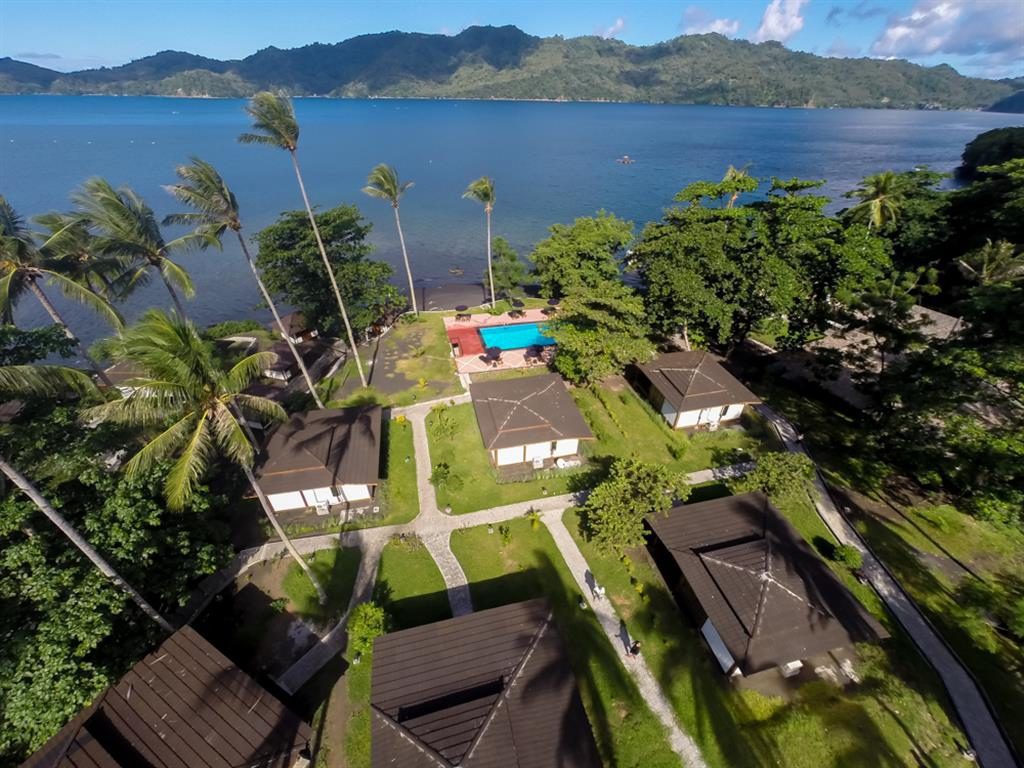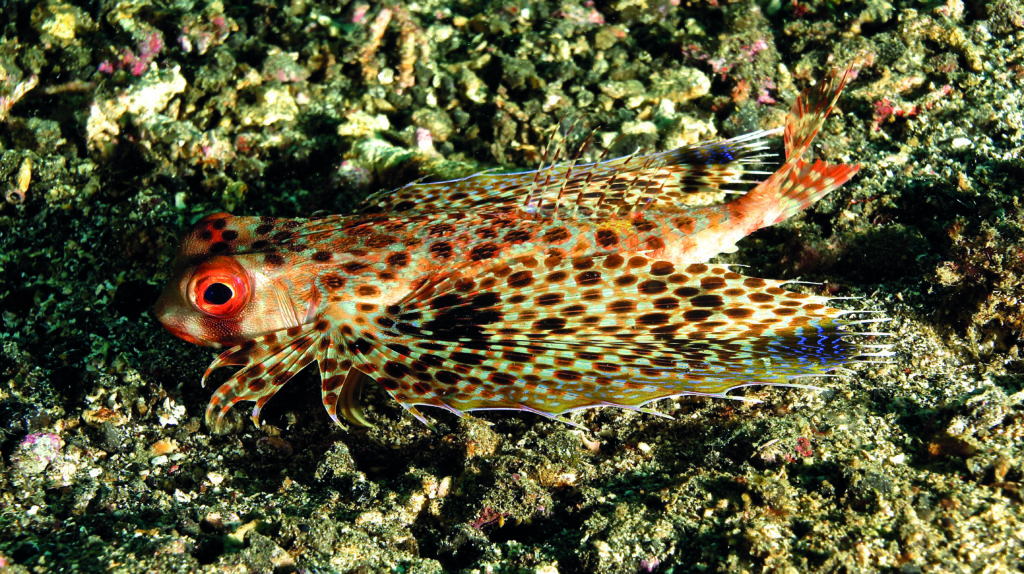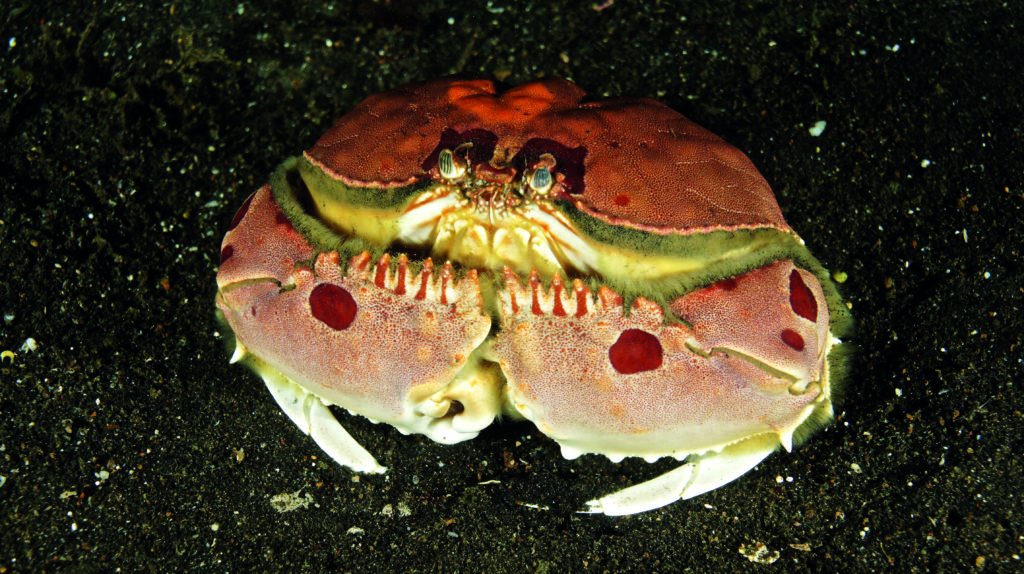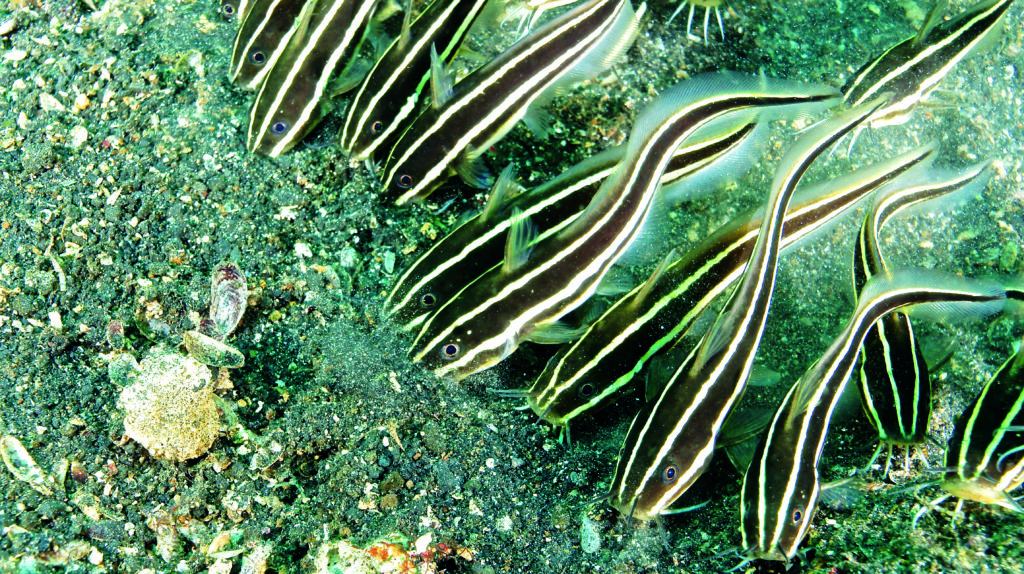Lembeh Strait has long been heralded as the place to go for muck diving, but many pretenders to the throne have reared their heads. MARK EVANS heads back to Indonesia to see if the champ has still got what it takes.
Also read: Return to Siladen (with Gen Alpha)
I am, without doubt, a big animals kind of guy. I relish encounters with sharks, turtles, manta rays etc – and the bigger, the better. Feeling rather inadequate next to some form of majestic marine life has to be one of the most thrilling experiences possible. And at one time I would be scornful of people who got all giddy and excited about some tiny nudibranch or crab – the macro life of the reef just didn’t do it for me.
Then, several decades ago, I went to Lembeh Strait in North Sulawesi, Indonesia and my entire viewpoint changed.
Yes, I still love my big animals, but equally, I adore the weird-and-wonderful little beasties that dwell on the sand and in the reefs. Wherever I travel on assignment, I endeavour to seek out both forms of life. Run-ins with big sharks might get your heart racing but hunting – and finding – some minute shrimp hiding in a sponge gives you an immense sense of achievement.
I have been back to Lembeh a handful of times since that eye-opening initial visit in 2000, and while there are now other places around the planet that profess to offering world-class muck-diving sites, I have to say that the Strait can still more than hold its own against these young pretenders.
The term “muck-diving” was even coined in Lembeh Strait, and accurately describes what it‘ i’s like when you head out for a dive on a seemingly desolate slope of black volcanic sand dotted with old bottles, paint cans, plastic bags and other human-made detritus.
I still get a kick out of watching the faces of muck-diving virgins go from shock and dismay (when they first see the dive-site they have travelled halfway around the world to get to) to joy and amazement (as they are shown the endless procession of bizarre critters that call the area home).
Even now, as a relative veteran when it comes to grubbing about for little creatures, I am still constantly left in awe at the sheer variety of marine life you can encounter on your average muck dive – and the eagle-eyed skills of the dive-guides who seek them out.
On a typical site in Lembeh, expect the likes of flamboyant cuttlefish, seahorses, ornate ghost pipefish, filefish, frogfish, octopuses, numerous varieties of shrimp and nudibranchs, and a host of other photo-friendly critters.
Hardcore muck to colourful coral
On my last visit, to Dive Into Lembeh dive-centre at Hairball Dive Resort, I set out with dive-guide Rano to tick off as many of the “must-see“ animals as possible, and we split our dives between hardcore volcanic black-sand muck-dives, grey sandy slopes interspersed with the odd coral bommie, and true reef dives bursting with vibrant soft corals and sponges. Lembeh might be known for its critters, but some of the colourful coral formations are spectacular as well.
And to be honest, while I love ferreting around on the proper muck-sites, it makes a welcome change to dive on a vivid, pristine coral reef now and then to break things up.
My hawk-eyed guide flitted this way and that, constantly on the look-out for tell-tale movements or shapes in the seabed. Over the course of several dives we racked up numerous frogfish, from giant examples to cute hairy fellas, as well as pygmy cuttlefish, flamboyant cuttlefish, mantis shrimps, orangutan crabs, coconut octopus, mimic octopus, devil scorpionfish, stargazer, seahorses, harlequin shrimp, nudibranchs – the list was almost endless.
Sitting in the Hairball Dive Resort bar that evening, supping on cold beers and munching on tasty snacks, the divers compared their “hit-lists”, congratulating one another on particularly noteworthy sightings (and perhaps inwardly gritting their teeth with envy in some instances) and offering advice on where to go to spot certain critters.
It is an extremely pleasant way to round out a great day of diving – and one that was repeated on a daily basis.
Conclusion
If you like your little critters, this location should be on your bucket-list. If you’re a photographer, you will find yourself in heaven with your macro lens. The Indonesian people are very friendly and welcoming, the Hairball Dive Resort and Dive Into Lembeh dive-centre are nicely designed, comfortable, aesthetically pleasing and run like a well-oiled machine.
And while you might feel a million miles away from the rat-race back home while there, Sulawesi is relatively simple to get to these days, making this the perfect package.
THE DIVE-CENTRE & RESORT

Singapore Air has numerous flights per week from London directly into Singapore, and subsidiary Silk Air provides the hopper flight into Manado. From Manado, it is just an 90-minute minibus ride to Lembeh Strait.
The Dive Into Lembeh dive-centre is located on the water’s edge in Kasawari Bay within Hairball Dive Resort. The beach is a few steps from the guest gear-room, which has well-thought-out storage solutions for equipment, and the dive-boats are moored on the shoreline.
Two of the most famous dive-sites in Lembeh Strait, muck-diving heaven Hairball and colourful reef Awe Shucks together form the centre’s house reef.
There are large rinse ranks for dive-kit and photographic equipment, and snappers will be in raptures over the monster camera-room, which has individual workstations with non-slip mats, towels, strip lights and multiple power sockets. It is also directly opposite the bar.
Dive Into Lembeh is efficiently managed by Steve & Miranda Coverdale, who have a small but professional team, with eagle-eyed dive guides adept at finding the smallest critters.
Hairball Dive Resort has nine private sea-view bungalows, an open-air restaurant and bar, beach-side fire-pit area, swimming pool, boutique spa plus the dive-centre.
All the bungalows are in the same category, made from locally sourced materials, and equipped with air-conditioning, ceiling fan, mini-bar, safe, and hot and cold water dispenser with tea and coffee facilities. Each has its own Japanese Onsen (hot tub) on the veranda to warm up in at the end of your diving day, alongside comfortable beanbag chairs on which to relax and soak up the views.
A seven-night stay with 12 guided day dives costs from US $1,200 (c£945) depending on choice of accommodation (2023/24 rates).
Photographs by Mark Evans
Also on Divernet: Adventures In Wunderland, Critters à la carte, Hugycup shoot-out returns in December





